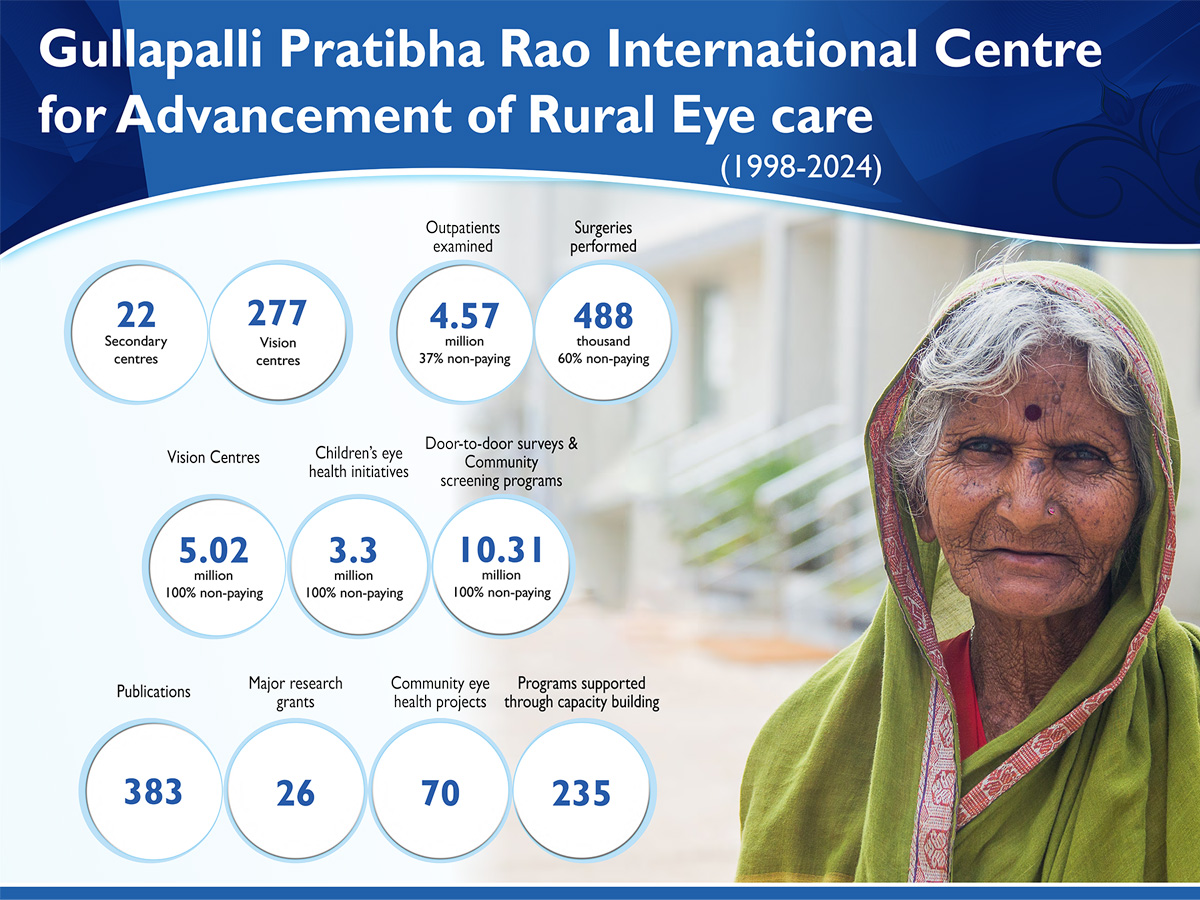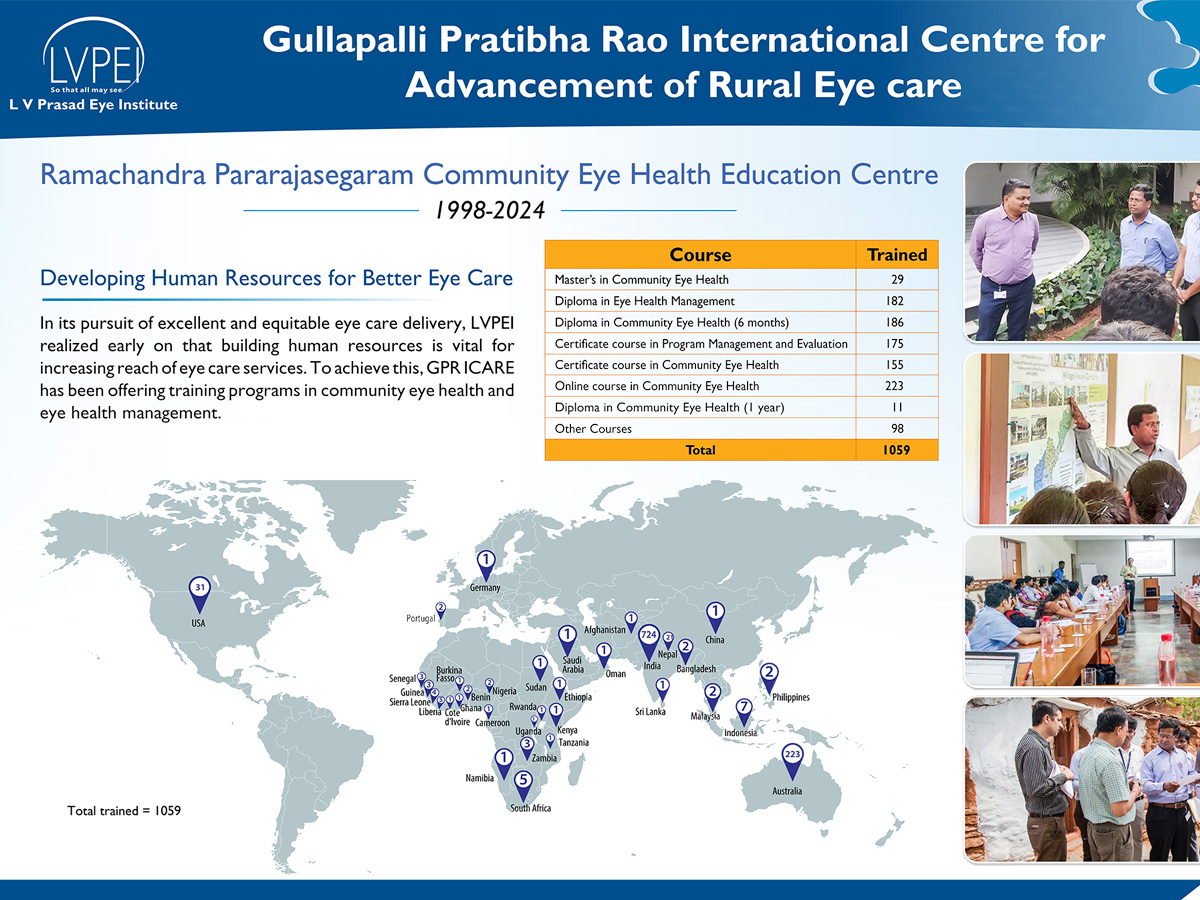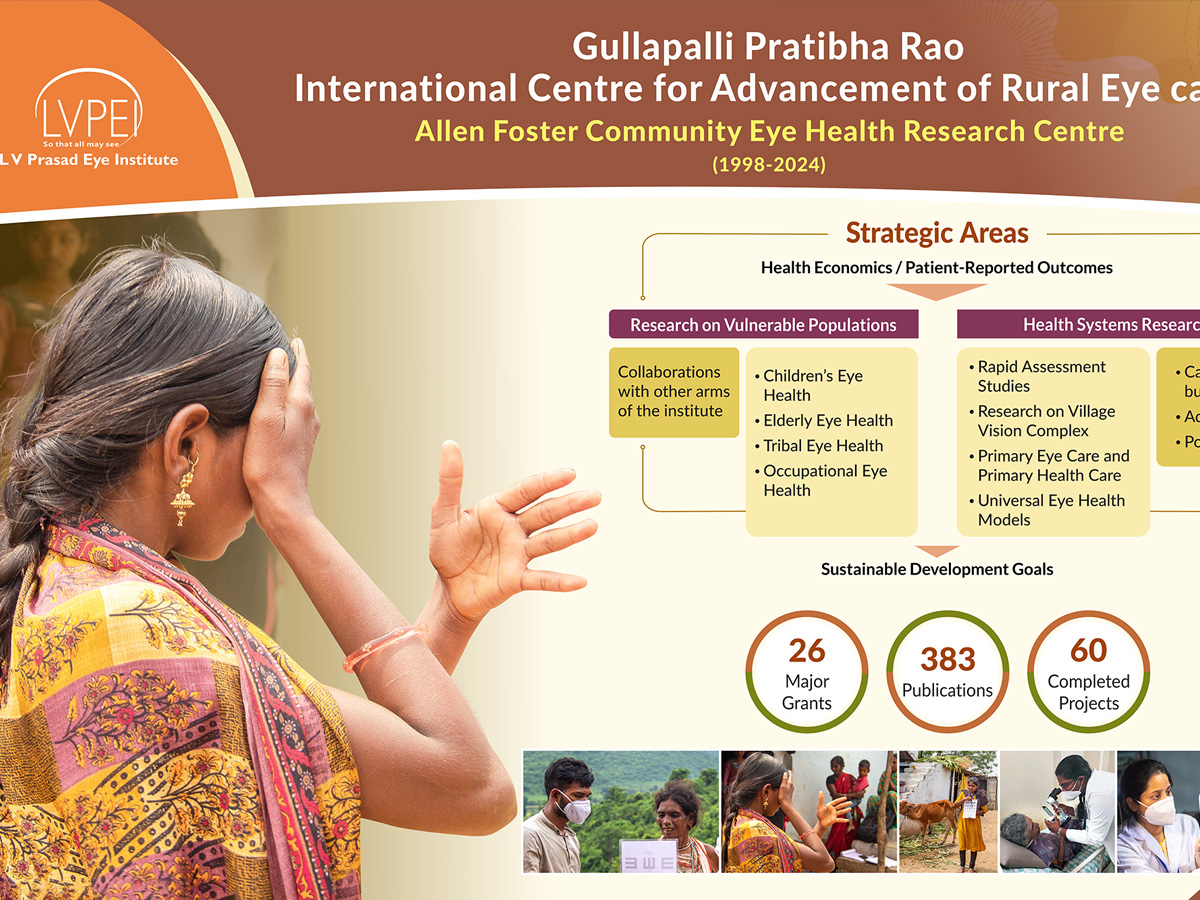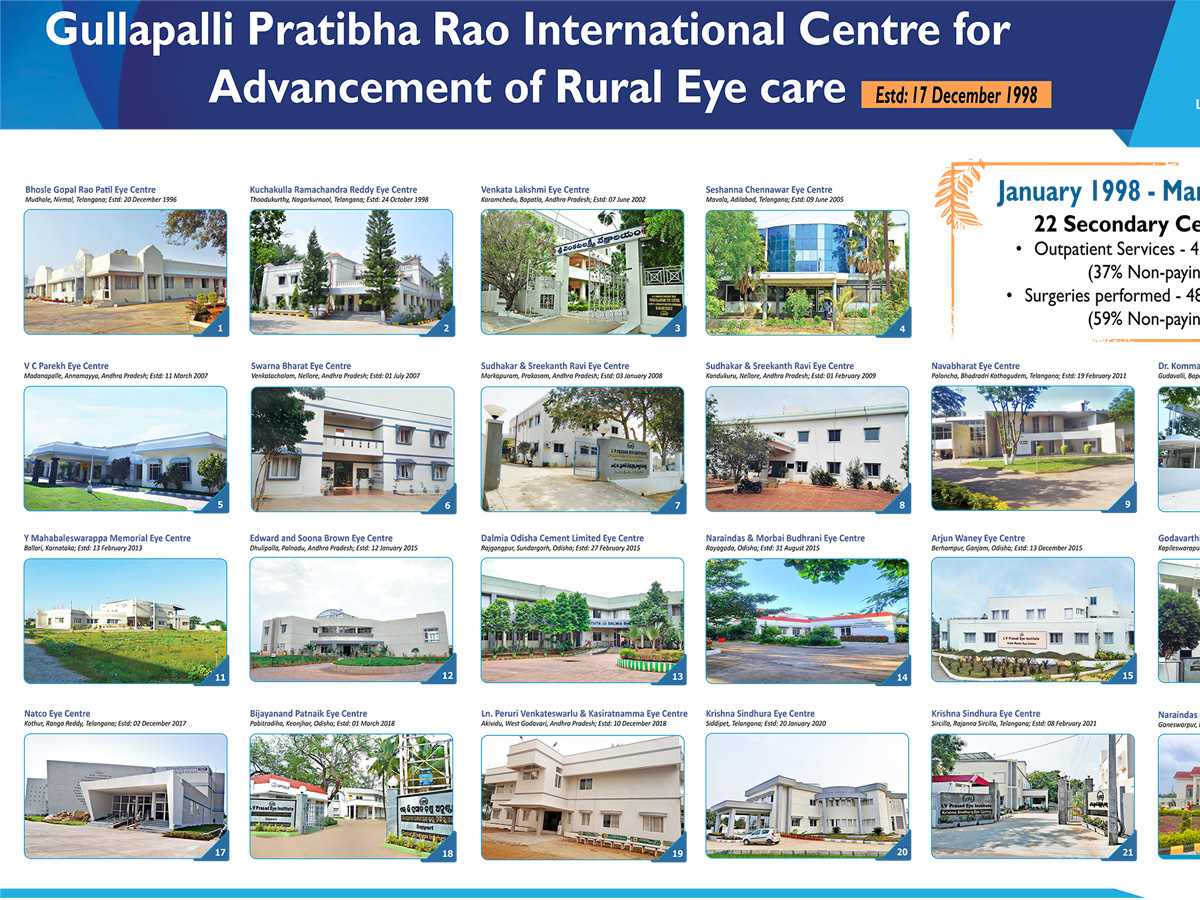Gullapalli Pratibha Rao International Centre for Advancement of Rural Eye Care (GPR ICARE)
LVPEI's community outreach program, began in May 1998, with the aim of making high-quality, appropriate eye care accessible to all. GPR ICARE focuses on both the geographically removed as well as the economically disadvantaged groups.
- To develop high quality self-sustaining eye care services in neglected areas of India and other parts of the developing world
- To train all cadres of eye care personnel for the provision of and efficient eye care services
- To participate in planning eye health initiatives in the developing world
- To undertake operations and research projects to understand the best way to deliver eye care services to communities

Highlights: 2022-2023
- Efforts to enhance services at secondary centres continue: V C Parekh Eye Centre and Edward and Soona Brown Eye Centre in Andhra Pradesh were upgraded with support from V C Parekh Charitable Trust and NIFF Infrastructure Limited respectively. A new block is under construction at Bhosle Gopal Rao Patil Eye Centre in Telangana. The Pashyantu mobile eye diagnostic unit was launched to cover the rural areas in Telangana State.
- With the addition of 13 new Vision Centres, our Primary Eye Care Network has expanded to 245 centres, serving over 10 million people. Additionally, two existing vision centres were upgraded to technology-enabled Futuristic Vision Centres having advanced ophthalmic diagnostic equipment to diagnose sight-threatening conditions. They also provide care through tele-ophthalmology that helps patients receive advanced eye care near their doorstep.
- The first Simple Limbal Epithelial Transplantation and Corneal Transplant surgeries were successfully performed at Naraindas & Morbai Budhrani Eye Centre in Balasore, Odisha, and Seshanna Chennawar Eye Centre in Adilabad, Telangana, respectively. Additionally, two secondary centres have started providing intravitreal injections. The number of secondary centres offering advanced surgical eye care has now grown to six.
- Focused efforts have strengthened the referral system at LVPEI’s primary eye care centres. The prompt diagnosis of three children with Retinoblastoma (eye cancer), and two children with Congenital Cataracts and Glaucoma, and their quick referral for advanced treatment is evidence of LVPEI’s well-connected network of centres.
- Public health studies funded by USAID, Lions Clubs International Foundation and Gland Pharma investigated the eye health and well-being of vulnerable groups such as children, the elderly, people with disabilities, and certain occupational communities. These studies screened approximately 2,00,000 children, including 3500 children with disabilities, as well as over 3500 elderly and 3000 workers in cloth weaving, garment making, and jewellery making communities.
Eye Health Pyramid
A 'bottom-up' pyramid represents LVPEI's model of holistic Eye Care - creation of sustainable permanent facilities within communities, staffed and managed by locally trained human resources, and linked effectively with successively higher levels of care.
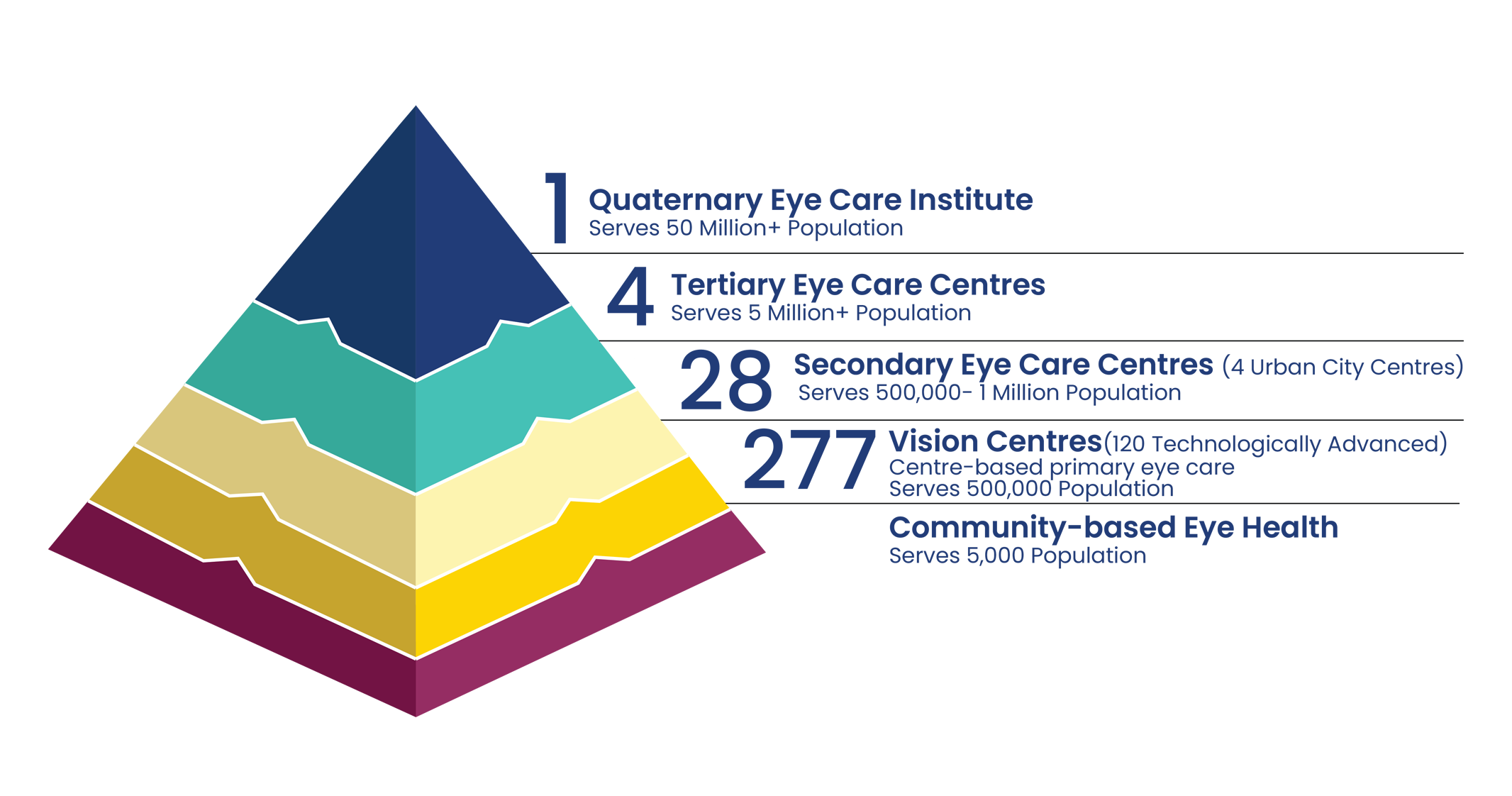
At the base of the pyramid are VISION GUARDIANS that represent community involvement. Vision guardians comprise trained young people who keep a close vigil on the eye health of about 5,000 persons within communities, through door-to-door surveys and other informal means.
VISION CENTRES form the next level and serve the primary eye health needs of the community. Drawing upon local talent and staffed by persons from the local community, each Vision Centre caters to a cluster of villages, individually servicing a target of around 50,000 people.
SECONDARY EYE CARE CENTRES are networked to the Vision Centers and each serves a population of 500,000 persons. These centres provide care that can diagnose the complete range of ophthalmological diseases and offer high quality surgical care for cataract - the most common cause of blindness. These centres draw upon local talent too, with team members recruited from the local community and trained at LVPEI’s advanced tertiary centres.
TERTIARY CARE HOSPITALS / TRAINING CENTRES are linked to Secondary Centers and each serves a population of 5 million persons. These centres provide a comprehensive range of services and also serve as training centres to the secondary centres.
CENTRES OF EXCELLENCE are linked to tertiary centers and each serves a population of 50 million persons. These centres treat complex diseases, train the trainers in subspecialties & rehabilitation and engage in advocacy.
The LVPEI model draws the most marginalized populations into the health care system, providing affordable or free eye care, without compromising on quality. Vision Centres and Service centres can entirely eliminate 75% of all avoidable blindness due to the need for spectacles, detect potentially blinding problems. Thus only 25% vision impaired people in rural, remote areas need to travel to the cities to access tertiary care.
Our Reach
-
1 CENTRE OF EXCELLENCE
-
4 TERTIARY CARE CENTRES
-
26 SECONDARY EYE CARE CENTRES
-
277 VISON CENTRES



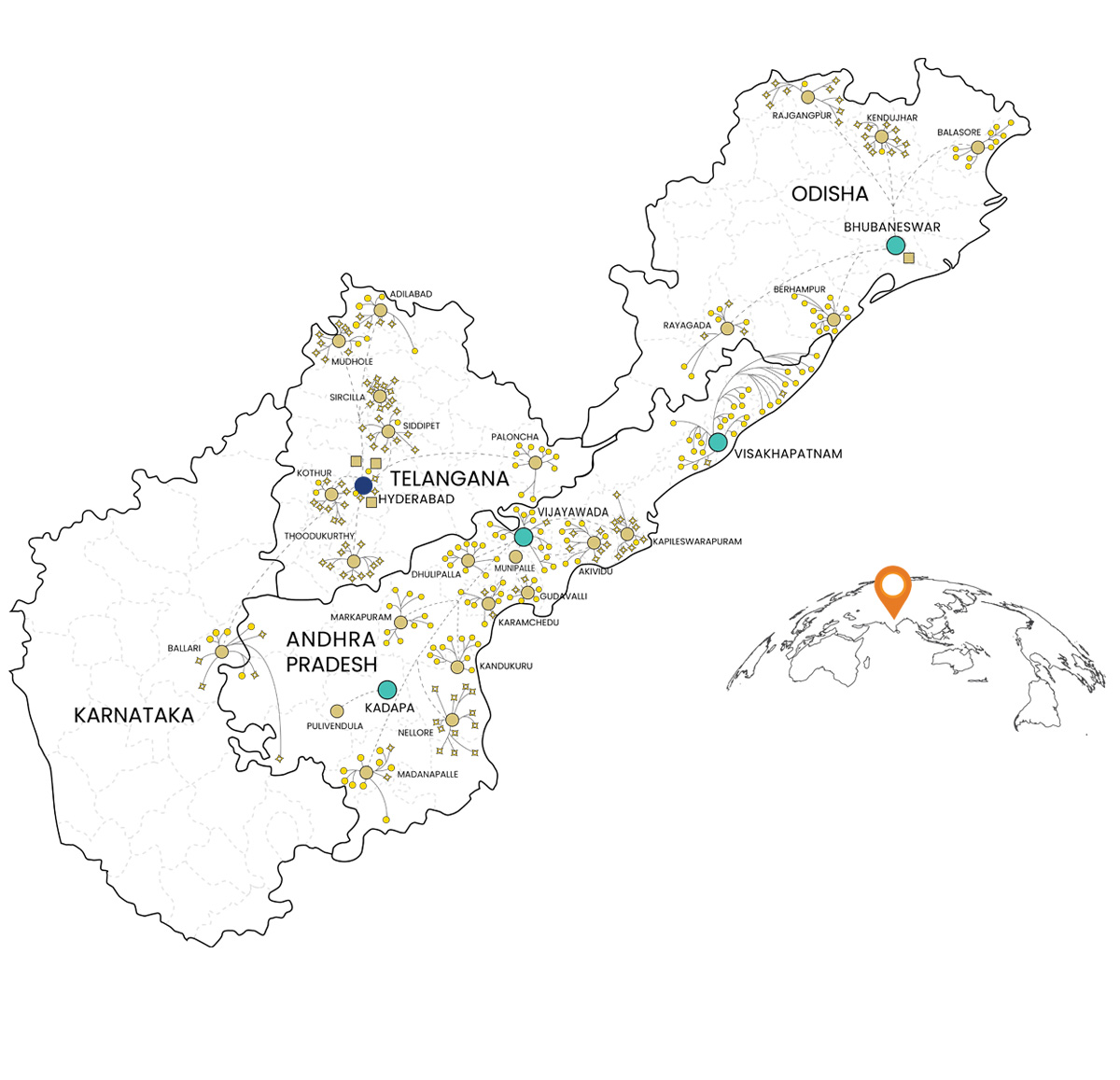
Additionally, LVPEI has one overseas partnership centre in Monrovia, Liberia (West Africa)
Liberia Eye Health Initiative
LVPEI's mission is to provide equitable and quality eye care to all sections of society. Read MorePosters
Programs in Community Eye Health
In the pursuit of excellent and equitable eye care delivery, LVPEI realized early on that building human resources is vital for increasing the reach of eye care services. To achieve this.
Read More
Public Health Research and Community Eye Care Projects
The main aim of the community eye care projects is to provide holistic eye care services on an on-going basis throughout the LVPEI network. Read More →
Service Delivery Epidemiological Research










